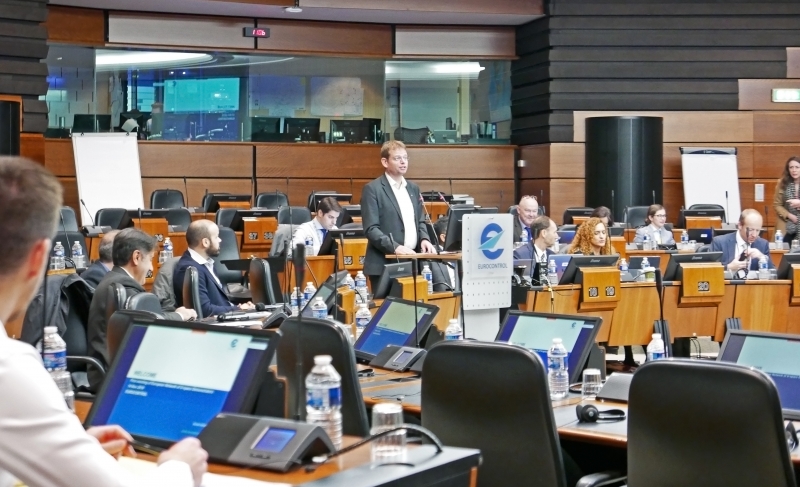On 14 November Eurocontrol hosted the first meeting of members of the European Network of U-space Demonstrators launched by Commissioner Violeta Bulc on 19 October in Antwerp. Eurocontrol is part of the Network Cell, together with the European Aviation Safety Agency (EASA) and the SESAR Joint Undertaking (SJU) which supports the newly established Network to develop concrete material for U-space projects. The network will become a forum to share knowledge on how to keep drone operations safe, secure and green.
The meeting focused on addressing the challenges which businesses are facing to deploy U-space services and looked at how the Network can best support them.
Munish Khurana, Senior Manager – Business Development Directorate European Civil-Military Aviation Aviation Co-operation and Strategies at Eurocontrol outlined some of the imminent actions planned by the agency to support the demonstration programme. These include the release of a U-space Web Portal planned for the end of November 2018 and the publication by the end of November 2018 of documents produced by the agency and supported by the European Commission and EASA covering the UAS ATM operational concept, UAS Common Altitude reference system, UAS ATM airspace assessment and UAS flight rules
The Brussels meeting also discussed ways to de-risk implementations, by reducing “first-time” errors and uncertainties and sharing “lessons learned”, notably for Beyond Visual Line of Sight (BVLOS) or automated applications. It brought together ideas to accelerate the lead-time to market for novel services and solutions, notably by facilitating the mobilisation of the relevant public and private parties that are pivotal in enabling and authorising the deployment of such solutions into the marketplace. It provided a platform for those regulators and other public authorities – in particular safety authorities and local authorities – which are responsible for handling early implementations, to jointly acquire the capabilities and develop the due processes and guidance that are key to realising such implementations. Attendees also suggested ways to reduce red tape by streamlining regulatory and administrative hurdles across borders, pushing for as much harmonisation as possible.
The meeting also featured presentations from national U-space programme leaders highlighting the progress and lessons learnt so far alongside views of where the Network should focus its work programme.
The Ministry of Infrastructure in Poland proposed the work should be focused on five key areas: a drone registration database interconnect; a European drone tourist scheme with respect to GDPR for Open category (in first round) drone operations; sharing U-space specific airspace information in the European UTM network; international flight planning tools, with respect to global and local specific requirementsl; and support to cross country flights (BVLOS) in the Specific category of drone operations.
The UK’s NATS highlighted three lessons it had learnt for far from its UTM work: airborne risk cannot be solved without close ATM/UTM integration; controlled airspace may provide the best environment for BVLOS demonstrations; and flexibility in drone operations can reduce burden on technology/procedures – a drone has the luxury to cease/hold operations and safety descend – not possible in manned aviation today.
The presentation from Switzerland’s Innovation Management Office (IMO) outlined which UTM services would be available next year with the roll-out of the national UTM service (registration, e-identification, tracking, geo-awareness, flight planning, automated airspace authorization, manned special flights integrated within U-Space) and which questions still needed to be answered:
- Is the U-Space registry the solution to the basic regulation registration requirements?
- What functions will be exclusive to FIMS? Under which regulatory regime? Economical considerations such as natural monopolies, externalities, etc. are key to this determination
- Will the U-Space regulation require elements of net neutrality? If yes, how?
- How are organizations within U-Space regulated? Which oversight mechanisms to use?
- How to manage strategically conflicting traffic? Priorities, cost functions, etc.?
- What information to share? Commercial interests vs. safety and security needs
- What frequencies to us – 4G / 5G, others?
- How should cross border operations be managed?




